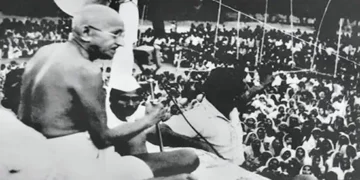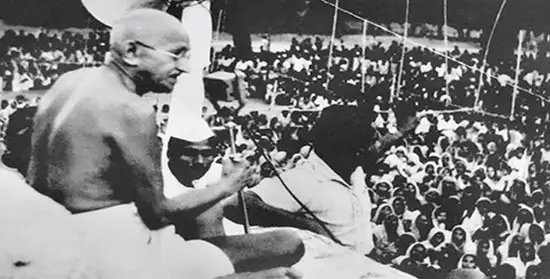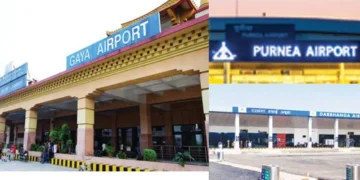Blitz Bureau
NEW DELHI: ON October 2, the world honours the birth of Mahatma Gandhi. In India, the day is celebrated as Gandhi Jayanti, while across the globe it is observed as the International Day of Non-Violence, following a 2007 United Nations resolution that received support from over 140 countries.
This dual observance gives the day a unique significance that is rooted in India’s national memory yet shared as a universal message for humanity. At the UN, the day is observed with statements from the Secretary-General and events that connect Gandhi’s philosophy to today’s realities. In recent years these messages have pointed to the conflicts across the globe and have reminded nations that Gandhi’s belief in truth and non-violence is “more powerful than any weapon.”
National missions
In India, the observance takes the form of tributes at Raj Ghat, cultural and educational programmes, and public campaigns that highlight Gandhi’s ideals. Over the years, these commemorations have gone beyond ceremonial gestures to inspire national missions — from the Swachh Bharat Abhiyan that promotes cleanliness, to the revival of Khadi and rural industries symbolising self-reliance.
The International Day of Non-Violence thus stands as both a national homage and a global call to action. It reminds us that Gandhi’s message is not confined to the past but continues to light the way towards a world where peace triumphs over conflict, dialogue over division, and compassion over fear. The Fifth Ahimsa Lecture, part of an ongoing series of lectures focused on non-violence, was last organised in September 2022 at the United Nations by Unesco’s Mahatma Gandhi Institute of Education for Peace and Sustainable Development (MGIEP) in partnership with India’s Permanent Mission. It brought Gandhi’s philosophy vividly to life.
Centred on the theme ‘Education for Human Flourishing’, the event stressed that true learning must nurture the body, mind, and spirit, and cultivate empathy and moral imagination alongside knowledge. A highlight was the use of a life-size hologram of Mahatma Gandhi, which conveyed his reflections on education and non-violence — a blend of tradition and technology that left a striking impact.
Just as Gandhi’s railways journeys helped him understand India’s diverse needs, modern India has translated his core philosophies into comprehensive national programmes that address the very issues he championed.
India declared Open Defecation Free on October 2, 2019. Under the programme, more than 12 crore toilets have been constructed and the lives of three lakh children under age 5 saved (WHO data).
Self-Help Groups (SHGs): Rs. 11,10,945.88 crore cumulative loans disbursed to women SHGs, 10.05 crore women mobilised into 90.90 lakh SHGs (as of June 2025). The target of mobilsiing 10 crore rural households achieved SVAMITVA Scheme: Launched on National Panchayati Raj Day in 2020, 65 lakh property cards distributed, 50,000+ villages covered, and drone surveys in 3.20 lakh villages completed Ongoing promotion through KVIC: Swadeshi philosophy and village-based production. In the last 11 years, production has increased four times, sales witnessed five-time rise and employment grew 49 per cent.
Tribal advancement
The PM Janjatiya Unnat Gram Abhiyan (PM JUGA/DAJGUA) was launched on October 2 last year from Hazaribagh, Jharkhand, by Prime Minister Narendra Modi with the objective of tribal community advancement for national development. Implemented through 17-line ministries with a financial outlay: of Rs 79,156 crore, it has benefited over 5 crore tribal citizens. The programme covers 63,000 villages in 549 districts, which is 71 per cent of the country.
Besides, 3.83 crore households have availed employment through the ongoing Mahatma Gandhi National Rural Employment Guarantee Act (MGNREGA). A total of 106.77 crore person-days have been generated by the scheme in FY 2025-26 (as of July 21, 2025).































